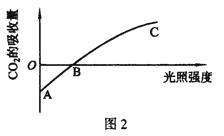Social referencing is a process in which infants seek out and interpret the emotional responses from their parents to form their own emotional understanding of unfamiliar events, objects, or people. The concept of social referencing in children has been the subject of increasing studies over the last quarter of a century, as developmental psychologists seek to understand the formation of emotion in infants and children. Researches in this area have sought to understand how children learn to respond emotionally to various events, how they learn to interpret emotional responses of others, and how they form ideas about appropriateness of emotional displays.
Question: The professor uses two experiments to illustrate the definition of "social referencing". Explain how the two experiments are related to the reading passage.
参考答案:
解析:The lecture talks about the term "social referencing", which refers to a process in which babies interpret the parents’ emotional responses to form their own understanding of unfamiliar objects. The lecture introduces two experiments to illustrate the term. The first experiment was conducted among 20 six-month-old infants. They were separated into two groups and were asked to play dolls. The first group’s mothers smiled to them while mothers of the second group put on an angry face. No differences were found between these two groups. Then, the same experiment was conducted among 20 one-year-old babies. The findings show that babies of smiling mothers continued to play and the rest babies stopped playing. This indicates that infants older than 1 year would take action according to social referencing.[听力原文] M: We are going to discuss some interesting examples of "social referencing". Social referencing means that an infant’s emotional understanding and responses to their parents’ behavior will develop as time passes. Two experiments were carried out to test the effects of "social referencing" in child development. The subjects of the first experiment are twenty six-month-old infants, who were separated into two groups. One group was arranged in a room with many dolls, and once they play dolls, their mother would smile to them. Another group was put in the same room afterwards; however, their mother looked angry when they played dolls. The results found that there weren’t any differences between these two groups of kids. The same experiment was also conducted among 20 one-year-old babies. The findings of this experiment indicate that when mothers smiled at the babies who were playing dolls, they would continue to play happily whereas the other group, most of the babies stopped playing dolls when their mothers showed angry faces. This, the researchers hypothesized, suggests that very young infants are not so much referencing from their mothers for emotional cues as for how to respond, but they are simply checking if their mothers were nearby when confronted with ambiguous or fearful situations. Infants more than one-year-old would begin looking for specific information from their mothers’ faces when referencing, and they would conduct certain actions in accordance with their mother’s facial expression.

